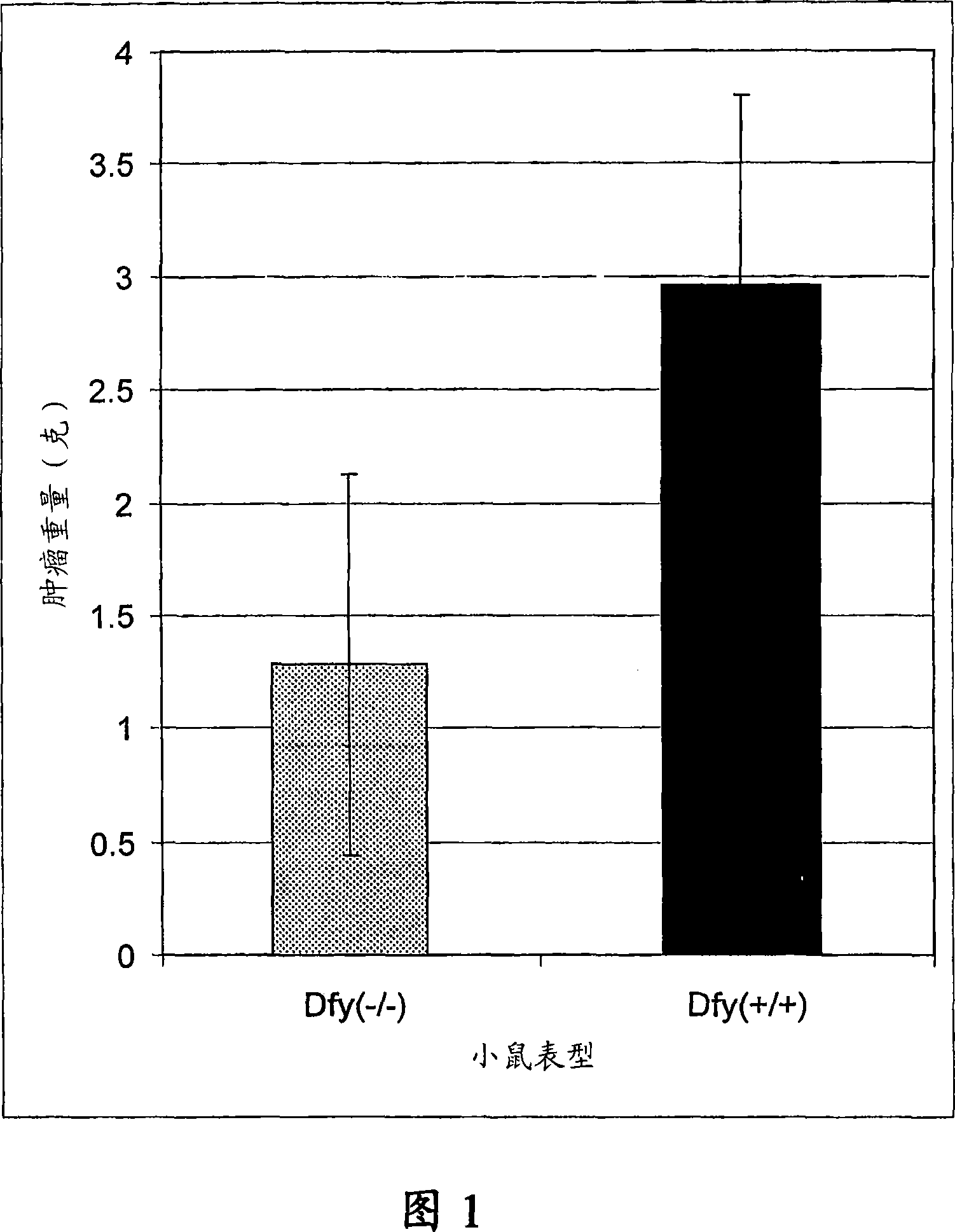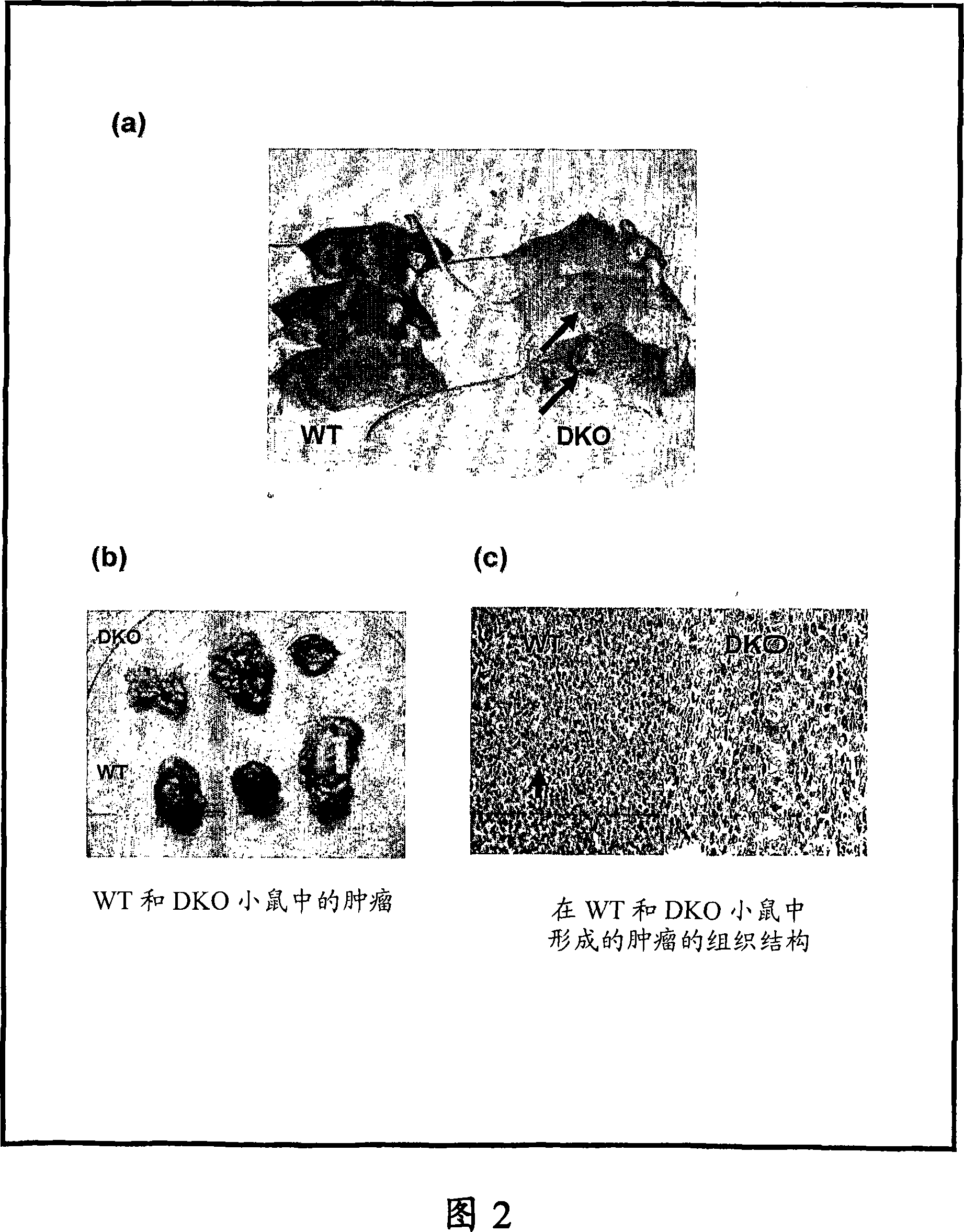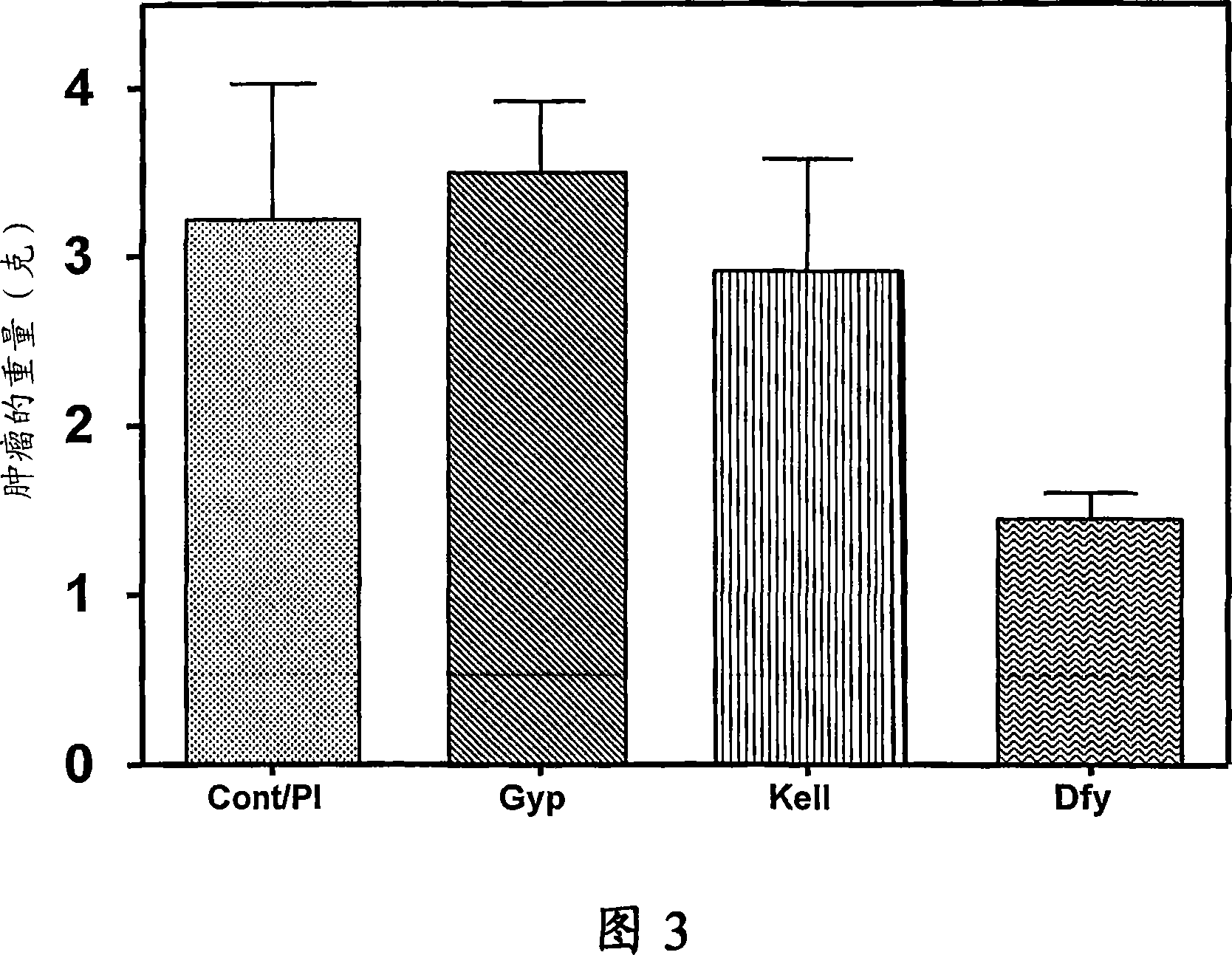Duffy antigen receptor for chemokines and use thereof
A chemokine receptor and chemokine technology, applied in the fields of application, antibody, anti-receptor/cell surface antigen/cell surface determinant immunoglobulin, etc., can solve the problem that the exact function of DARC and tumor-associated blood vessels have not been reported problems such as reduction
- Summary
- Abstract
- Description
- Claims
- Application Information
AI Technical Summary
Problems solved by technology
Method used
Image
Examples
Embodiment 1
[0109] Example 1: Materials and methods
[0110] Mouse Strains: The construction of Duffy knockout (DKO) mice has been described previously (Luo et al., Genome Research 1997, 7:932-941). Hybrid knockout mice [Dfy(+ / -)] were crossed to generate Dfy(+ / +) and Dfy(- / -) purebred congeners. Experiments were performed with age and sex matched animals. C57BL / 6J mice were purchased from Jackson Laboratory (Bar Harbor, ME).
[0111] Tumor formation: Lewis lung carcinoma (LLC) cells were grown in logarithmic phase, harvested and grown at 1×10 7 cells / ml were suspended in PBS. 100 [mu]l of the cell suspension was injected subcutaneously near the midline of the back of each animal (n=5). Fourteen days after injection, tumor growth and necrosis in each group of mice were monitored. After sacrifice of the mice, tumor size was digitally photographed and the entire tumor growth was weighed.
[0112] Histochemistry: For evaluation of necrosis and angiogenesis, tumors were fixed in 10% pho...
Embodiment 2
[0114] Example 2: Tumor Growth in Tamiflu Wild-Type and Tamiflu Knockout Mice
[0115] Solid tumors in Dfy(+ / +) (wild type, WT) and Dfy(- / -) (Duffy knockout, DKO) mice were formed by injection of Lewis lung carcinoma (LLC) cells. Tumors began to grow at the same rate in wild-type and knockout mice. Interestingly, tumors in the knockout mice began to show signs of necrosis earlier than in wild-type mice.
[0116] After 14 days, mice were sacrificed. Tumors were removed, weighed and compared. The results showed that solid tumors grew more slowly (by size and weight) in DARC knockout mice compared to wild-type mice (Figure 1).
[0117] Tumors in knockout mice experienced severe necrosis (see arrows in Figure 2a), whereas no necrosis was observed in tumors in wild-type mice (Figure 2a). Tumors in Dfy knockout mice had more necrosis and vessel rupture compared to Dfy(+ / +) mice (Fig. 2b). Furthermore, immunohistological studies showed that there was less microcapillary formatio...
PUM
 Login to View More
Login to View More Abstract
Description
Claims
Application Information
 Login to View More
Login to View More - R&D Engineer
- R&D Manager
- IP Professional
- Industry Leading Data Capabilities
- Powerful AI technology
- Patent DNA Extraction
Browse by: Latest US Patents, China's latest patents, Technical Efficacy Thesaurus, Application Domain, Technology Topic, Popular Technical Reports.
© 2024 PatSnap. All rights reserved.Legal|Privacy policy|Modern Slavery Act Transparency Statement|Sitemap|About US| Contact US: help@patsnap.com










